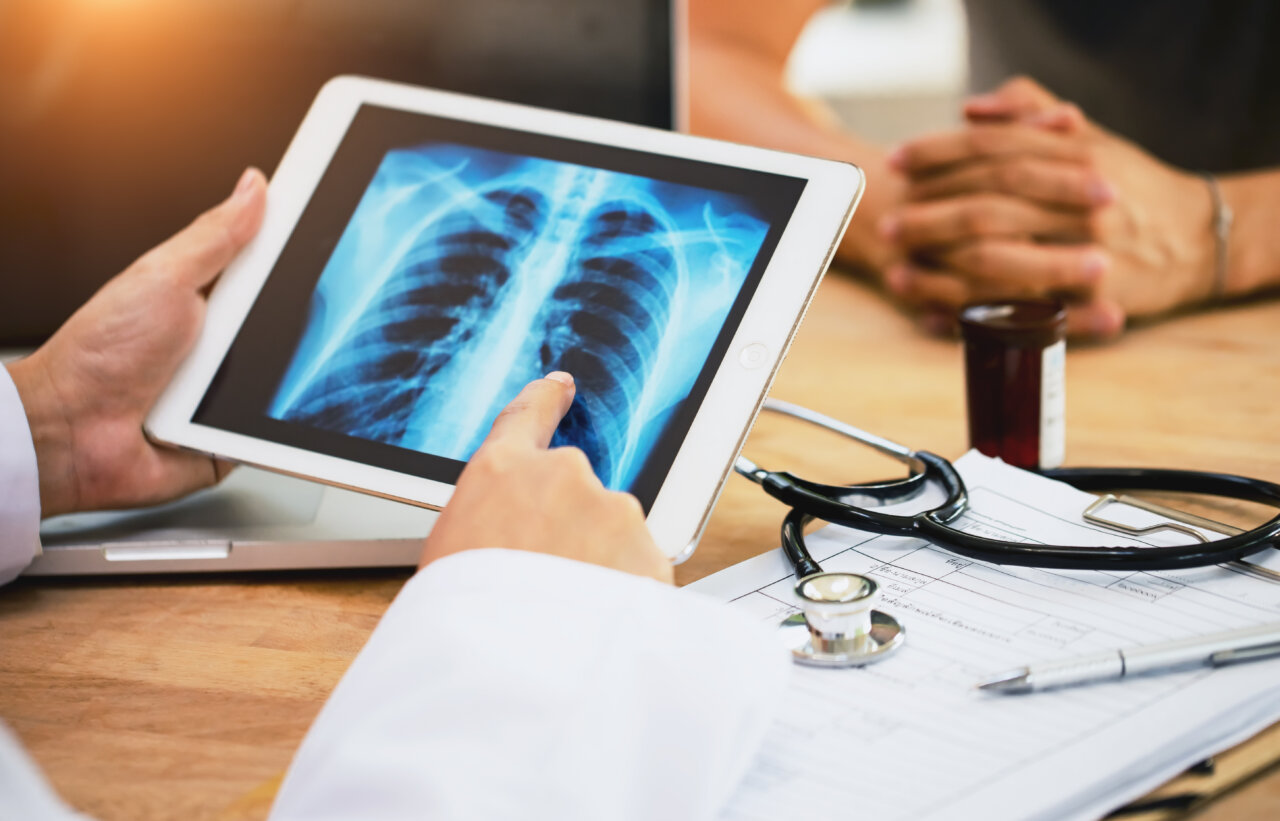Small Cell Lung Cancer

Clinically reviewed by Megan May, Pharmacist
There are two primary types of lung cancer: small cell lung cancer (SCLC) and non-small cell lung cancer (NSCLC). SCLC accounts for less than 15% of lung cancers but is the more aggressive of the two types.
In SCLC, in general, cancer cells typically grow quickly. They also often travel to other parts of the body. Doctors refer to this as metastasizing.
If you or someone you know has small cell lung cancer, it’s helpful to learn about the disease.
Small Cell Lung Cancer Symptoms
SCLC generally doesn’t cause noticeable symptoms in the early stages. As a result, doctors often don’t diagnose it until the cancer has spread to other parts of the body.
When symptoms do appear, they can include:
- Shortness of breath
- Chest discomfort or pain
- Persistent hoarseness or cough
- Wheezing
- Fatigue
- Coughing up bloody mucus
- Decreased appetite
- Weight loss
- Swelling of the face
Other health conditions can cause many of these symptoms, but you should see your doctor if you experience any of them. -0Small Cell Lung Cancer Risk Factors
Anyone can develop SCLC. However, your risk is greater if you have one or more of these risk factors:
- Smoking cigarettes, cigars, or pipes, currently or in the past
- Exposure to secondhand smoke
- Family history of lung cancer
- Exposure to carcinogenic substances, including asbestos, nickel, chromium, arsenic, tar, beryllium, and soot
- Breathing polluted air
- Human immunodeficiency virus (HIV) infection
- Exposure to radiation from imagining tests, radiation therapy to a breast or your chest, or atomic weapons
- Exposure to radon gas at your home or workplace
- Being a heavy smoker and taking beta-carotene supplements
As with most cancers, your risk of developing SCLC also increases as you age.
How Is Small Cell Lung Cancer Diagnosed?
Doctors use a wide variety of tests to diagnose SCLC. They include:
- Getting a health history
- Lab tests on blood, tissue, urine, sputum, and other materials from the body
- Chest X-rays
- Other imaging procedures, including CT and MRI scans
- Bronchoscopy, which is a procedure where a tube with a light and camera is used to capture images inside the lungs and of other structures
- Bone scans
- Tissue biopsies
- Light and electron microscopy
If you’re diagnosed with SCLC, your doctor will classify or “stage” the cancer as limited-stage lung cancer or extensive-stage lung cancer. In extensive-stage, cancer has metastasized to your other lung, lymph nodes, and other parts of the body.
Treatments for Small Cell Lung Cancer
Small cell lung cancer treatments can be effective if the cancer is caught early. They tend to be ineffective if it’s at a more advanced stage.
SCLC treatments include:
- Chemotherapy, which uses drugs to attack cancer cells
- Immunotherapy, which helps your immune system fight cancer
- Radiation therapy in which concentrated radiation kills cancer cells
- Surgery, which typically is only used if just one tumor is present and cancer hasn’t spread
All these treatment protocols have side effects. Chemotherapy, in particular, can cause fatigue, nausea, vomiting, diarrhea, dry mouth, mouth sores, decreased appetite, rashes and other skin changes, nerve pain, and significant hair loss.
Doctors often encourage SCLC patients to participate in clinical trials of new treatments if they’re eligible.
Small Cell Lung Cancer Prognosis
When SCLC is caught early, treatments can be effective. With advanced disease, the survival rate tends to be low.
Several factors affect a small cell lung cancer prognosis, including the patient’s age and overall health.
Learn About Cancer Care at Baptist Health
Baptist Health has skilled and experienced cancer care experts. If you or a loved one has been diagnosed with small cell lung cancer or any form of the disease, we’re here for you.



